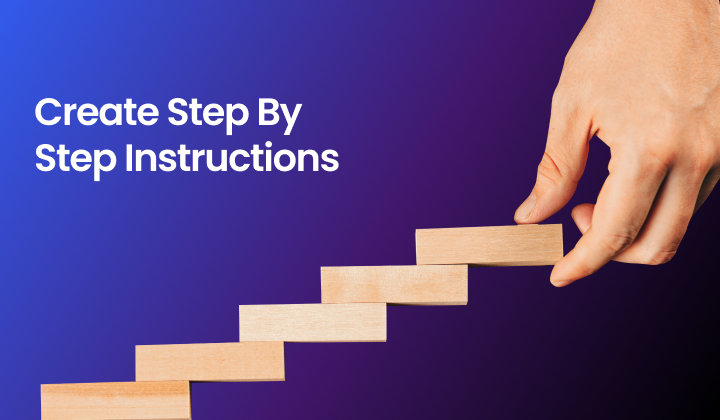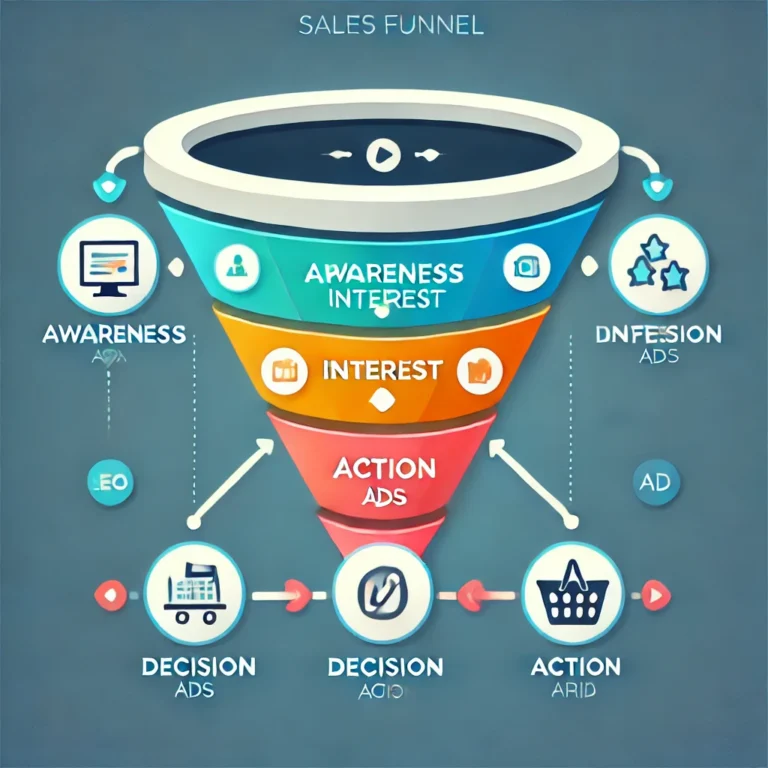Step-by-Step Guide to Building a Sales Funnel for Success
Step-by-Step Guide to Building a Sales Funnel for Success
If you’ve ever ventured into the world of online marketing or sales, you’ve probably heard the term Building a Sales Funnel. It’s one of those buzzwords that can feel both essential and intimidating. However, here’s the truth: a well-designed sales funnel is the backbone of a successful online business.
In this guide, we’ll break down everything you need to know about Building a Sales Funnel — step by step. Whether you’re a seasoned entrepreneur or just starting out, understanding how to build and optimize a sales funnel can significantly increase your revenue and conversions. Let’s dive in!
What is a Sales Funnel?
Before we dive into the specifics, let’s take a moment to understand what a sales funnel actually is. In simple terms, a sales funnel is a series of stages that a potential customer goes through before making a purchase. Think of it as a journey your leads embark on, starting from the moment they first hear about your product, all the way to becoming a loyal customer.
The funnel metaphor comes into play because, at each stage, the number of people decreases. For example, not every visitor to your website will become a lead, and not every lead will become a paying customer. As they move down the funnel, you lose some prospects, but the ones who remain are the most likely to convert. Therefore, it’s crucial to guide them effectively through each stage.
The Stages of a Sales Funnel
Every sales funnel consists of the following stages:
- Awareness – The top of the funnel (TOFU).
- Interest – The middle of the funnel (MOFU).
- Decision – The bottom of the funnel (BOFU).
- Action – The final step, where the conversion takes place.
The goal is to guide your leads smoothly through each of these stages. Moreover, each stage presents a new opportunity to engage with your leads and increase the chances of conversion.
Step-by-Step Guide to Building a Sales Funnel

Step 1: Define Your Target Audience for Building a Sales Funnel
Before you can start creating a sales funnel, you need to understand who your ideal customers are. After all, your funnel needs to be tailored to the specific needs and behaviors of your target audience. This is the foundation of every successful sales funnel, and it starts with understanding:
- Demographics – Age, gender, location, and income.
- Psychographics – Interests, values, lifestyle.
- Pain Points – What problems are your customers facing that your product or service can solve?
By understanding these factors, you can create messaging that resonates with your audience. Ultimately, the more specific you are about your target audience, the easier it will be to craft a message that drives action at each stage of the sales funnel.
Step 2: Create Awareness with a Lead Magnet
The first step in your sales funnel is to attract visitors to your website or landing page. This is where you create awareness about your brand, product, or service. However, you can’t just put a generic ad out there and expect people to come running. Instead, you need to offer something of value that piques their interest. This is where lead magnets come in.
A lead magnet is an irresistible offer that captures your audience’s attention and encourages them to exchange their contact information for something useful. Some examples include:
- Ebooks
- Webinars
- Free trials
- Discounts or coupons
- Checklists
- Templates
For example, if you sell a productivity app, you could offer a free ebook on time management or a checklist to organize a workday. Once visitors download or access your lead magnet, they’ve entered the Awareness Stage of your sales funnel. At this point, you’ve captured their information, which is the first step toward nurturing them into paying customers.
Step 3: Nurture Your Leads with Email Marketing
Now that you have someone’s contact information, it’s time to nurture that relationship. Email marketing is one of the best ways to keep your leads engaged and guide them down your sales funnel. In addition, it’s a great way to remind them of the value your product offers without being overly pushy.
The key is to avoid being salesy and instead focus on providing value. For instance, some ways to nurture leads through email include:
- Sending helpful resources (blog posts, guides, etc.)
- Offering additional value (special offers or discounts)
- Sharing customer success stories or testimonials
- Engaging with personalized recommendations
Furthermore, consistency is key. If you go quiet for too long, your leads might lose interest. Therefore, make sure your emails are helpful and encourage engagement, such as responding to questions or feedback.
Step 4: Build Interest with Targeted Content
Once your leads are engaged through email, the next step is to capture their interest with more targeted content. This is the middle of the sales funnel (MOFU), where you continue to nurture your leads by presenting more in-depth solutions to their problems.
Here’s where your content marketing strategy shines. You can provide your leads with blog posts, case studies, webinars, or even videos that focus on the benefits of your product or service and how it can solve their specific pain points. As a result, this helps build trust and keeps them coming back for more.
Step 5: Provide Solutions and Build Desire in Your Sales Funnel
At this stage of the sales funnel, you’ve built some trust and authority with your leads. Now, it’s time to move them into the Decision Stage by showcasing your product or service as the ultimate solution to their problem.
You’ll want to offer demonstrations, free trials, or consultations so leads can experience your product firsthand. The goal here is to make them feel confident about the value you offer. To do so, make sure to include:
- Testimonials – Show how your product or service has worked for others.
- Case studies – Dive deep into how your solution can benefit customers.
- Social proof – Highlight your product’s popularity or awards.
This is where you transition from simply being a provider of information to being a solution provider.
Step 6: Create Urgency and Push for the Sale in Your Sales Funnel
As you near the bottom of the sales funnel, it’s time to encourage action. The Decision Stage is where you need to make the sale. By now, your leads should be fairly convinced that your product is right for them, but they may need a little nudge to take the final step.
There are several techniques to create urgency and encourage immediate action:
- Limited-time offers – Discounts or bonuses that expire soon.
- Scarcity tactics – Limited product availability.
- Money-back guarantees – Remove the risk for the customer.
These strategies encourage leads to act quickly, ensuring they don’t slip away from your sales funnel.
Step 7: Make the Purchase Easy
At this point, you want to make the purchase process as smooth and simple as possible. This means providing a clear call-to-action (CTA) and an easy-to-use checkout process. Otherwise, the last thing you want is for your lead to get frustrated with complicated forms, long checkout pages, or unclear instructions.
Ensure that your payment gateway is secure, easy to navigate, and mobile-friendly, as many customers will purchase from their phones.
Step 8: Follow Up After the Sale and Continue Building a Sales Funnel Relationship
Just because someone has bought your product doesn’t mean your job is done. On the contrary, the post-sale stage is just as important as the rest of the funnel.
You want to continue building the relationship with your new customer so that they become a repeat buyer or even an advocate for your brand. For example, some ways to follow up include:
- Sending a personalized thank-you message.
- Asking for feedback or reviews.
- Offering complementary products or services.
This is also the stage where you can introduce upsells or cross-sells to increase your revenue.
Conclusion: The Power of Building a Sales Funnel
Building a sales funnel isn’t something that happens overnight, but with time and careful planning, you can create a system that consistently brings in qualified leads and converts them into paying customers. Keep in mind that it’s all about guiding your potential customers through each stage with the right content, value, and calls to action.
By focusing on building trust, solving problems, and creating urgency, you can turn your sales funnel into a powerful tool that fuels growth for your business.





